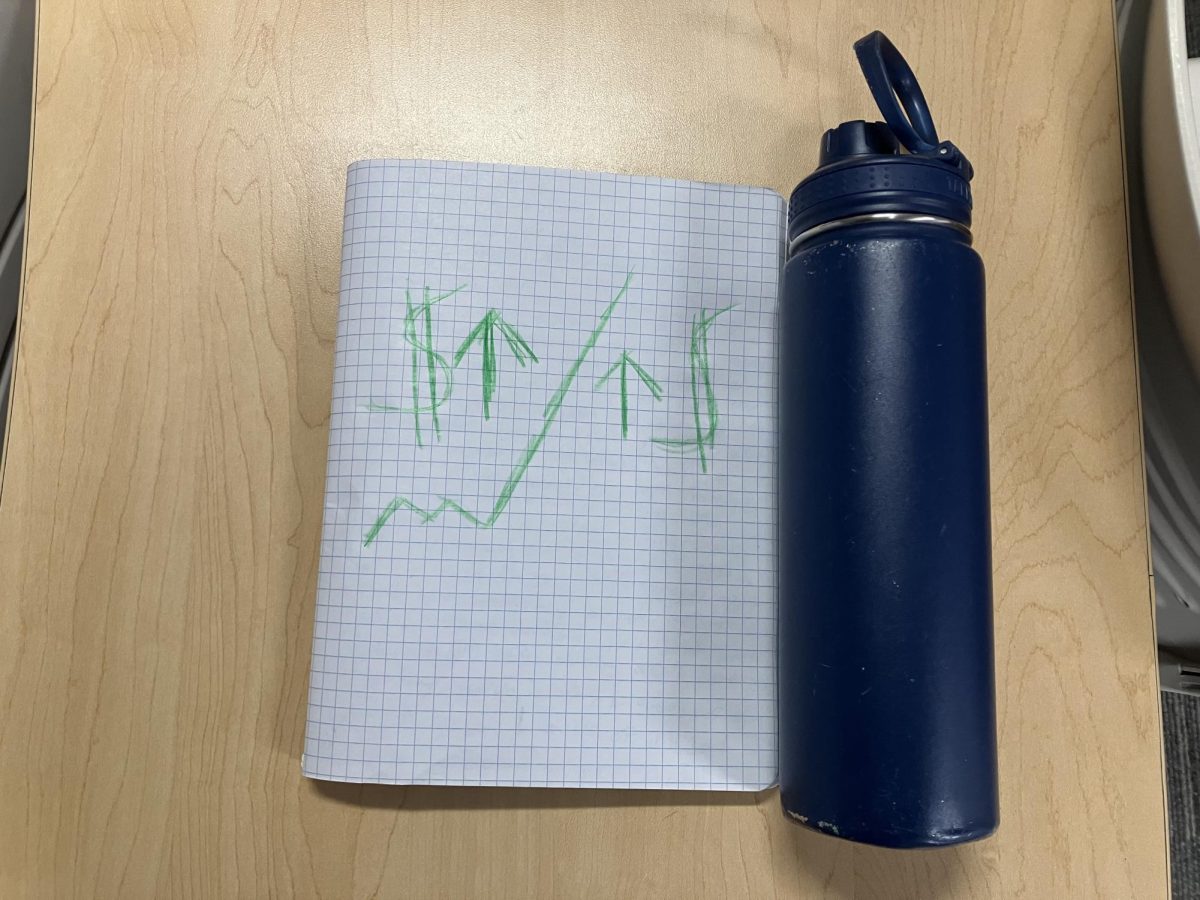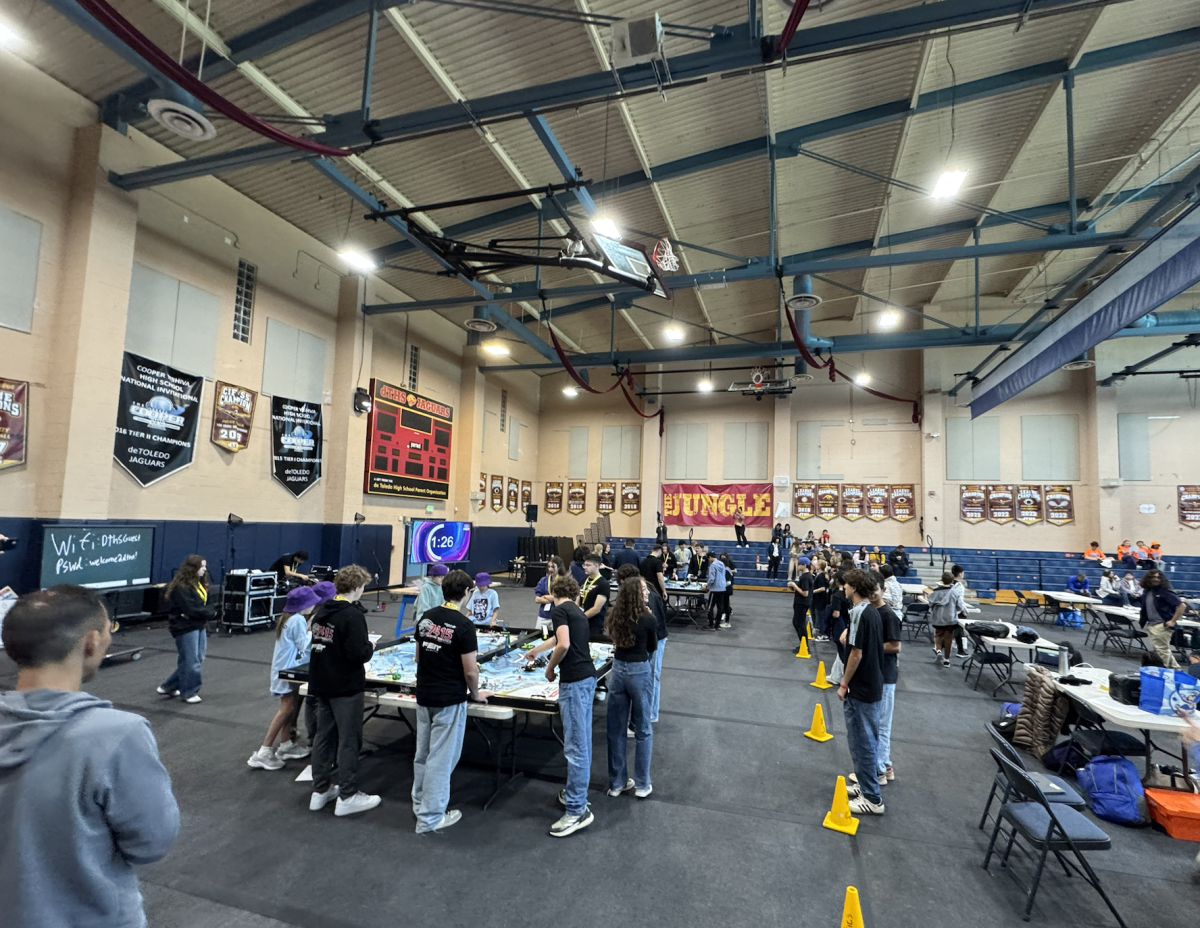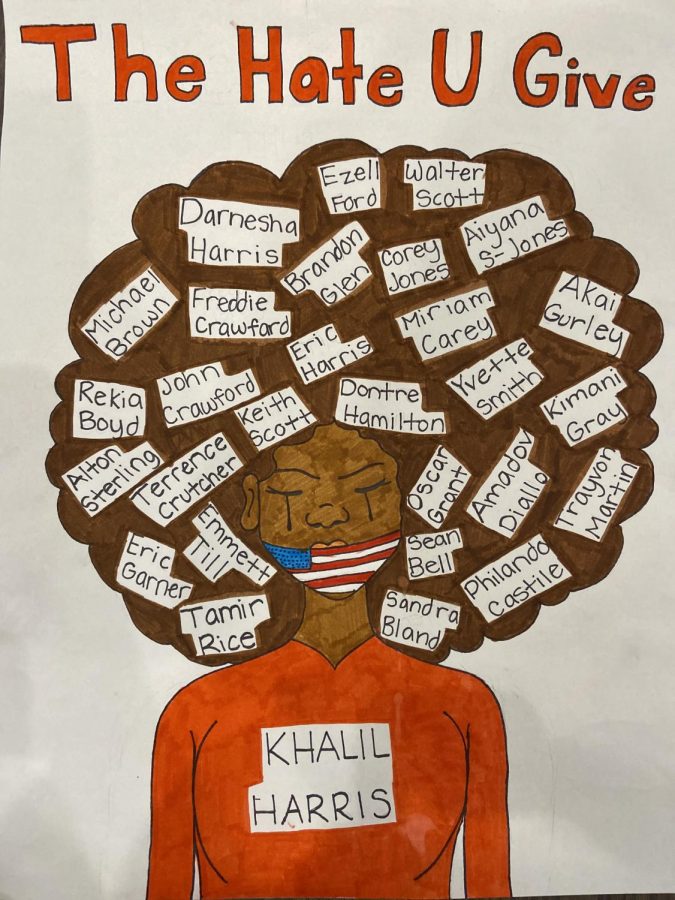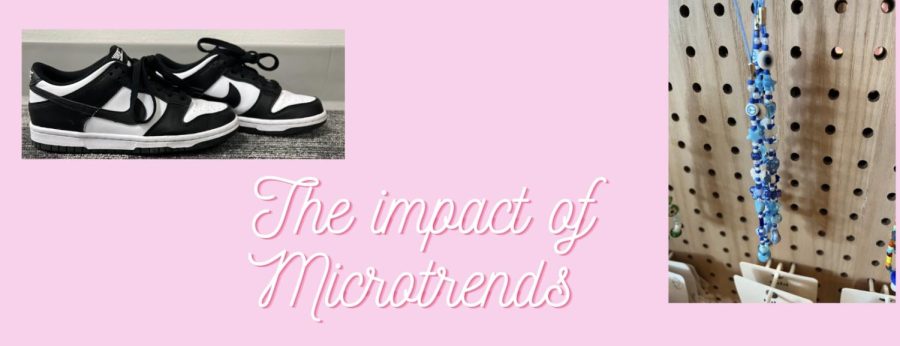Think Before YOU Buy!
Top left corner, Nike Panda Dunks, and on the right, a phone charm. Both of these are part of the dangerous micro trend cycle.
The opinions expressed in this article are the author’s own and do not necessarily represent the views of The Prowler.
Do you ever open your phone and scroll on Tik Tok to see a new trend?
Maybe you see everyone wearing chunky rings. You think to yourself: “Wow, this is so cute. I love it.” So, naturally, you buy a bunch of chunky rings, assuming you’re going to wear them all the time. Before you know it–within two weeks–you hate them because they are no longer in style.
In May, I saw everyone wearing Dickies. Dickies are a type of straight-leg work pants. I saw everyone rolling the top part of their Dickies and was convinced that I liked them. Now, six months later, I hate those pants and am so happy I didn’t buy them.
This is a perfect example of the vicious microtrend cycle. A microtrend is a trend that rises in popularity and falls even faster.
Microtrends have a bigger impact on our environment than you may realize.
The volume of clothing Americans throw away each year has doubled from 7 million to 14 million in under 20 years, and this is due to the rise of microtrend fashion. According to daily collegian.com, “ Sixty percent of fabric fibers are now made of synthetics derived from fossil fuels, so when clothing ends up in a landfill (about 85 percent of textile waste in the U.S. goes to landfills)..[the fabric] will not decay.”
I’m sure you’re thinking “What’s wrong with synthetic fibers?” Well, the process of manufacturing the fibers produces gasses which have a huge effect on climate change. Greenhouse gasses trap heat and contribute to global warming. The heat in the atmosphere halts the growth of food and makes water less accessible.
Microtrends don’t just just impact the environment, they also have a severe impact on our mental health. According to behavioral psychologist Carolyn Mair, when we buy something, it gives us a feeling of pleasure. Over time that feeling of pleasure disappears, so we move on to the next trend. “This psychology has long existed in humans,” Mair says, but fast fashion and microtrends make this feeling of pleasure more accessible than ever.
Now, I’m even guilty of relying on this feeling of pleasure. There is no way to completely avoid microtrends, but there are some ways you can be more mindful about what trends you participate in. Before you buy something, make sure to think about if you would still wear it after the trend is over.
When I bought Dunks (black and white Nikes), I knew I would wear them after the trend cycle was over because they were a classic shoe–they would never go out of style. Another tip is try restyling the clothes you already have. There are so many ways to mix and match what you wear. If you need some inspiration, I suggest looking on Pinterest. The last tip I have is to wait until the trend is over. I know it’s easy to see a lot of people wearing something and convince yourself that you like it. By waiting for the trend to be over, you can avoid over-consumption and save money!
I’m not writing this article to tell you to never buy a microtrend or shop from a fast-fashion store, but I am encouraging you to be more mindful about the trends you participate in!

Lindsey Shrager is a senior at de Toledo and this is her third year on The Prowler. She loves to listen to music and travel. Outside of school she is serving...

































Elaine Shrager • Nov 4, 2022 at 10:13 pm
Very thoughtful article with lots of good tips on saving the planet.